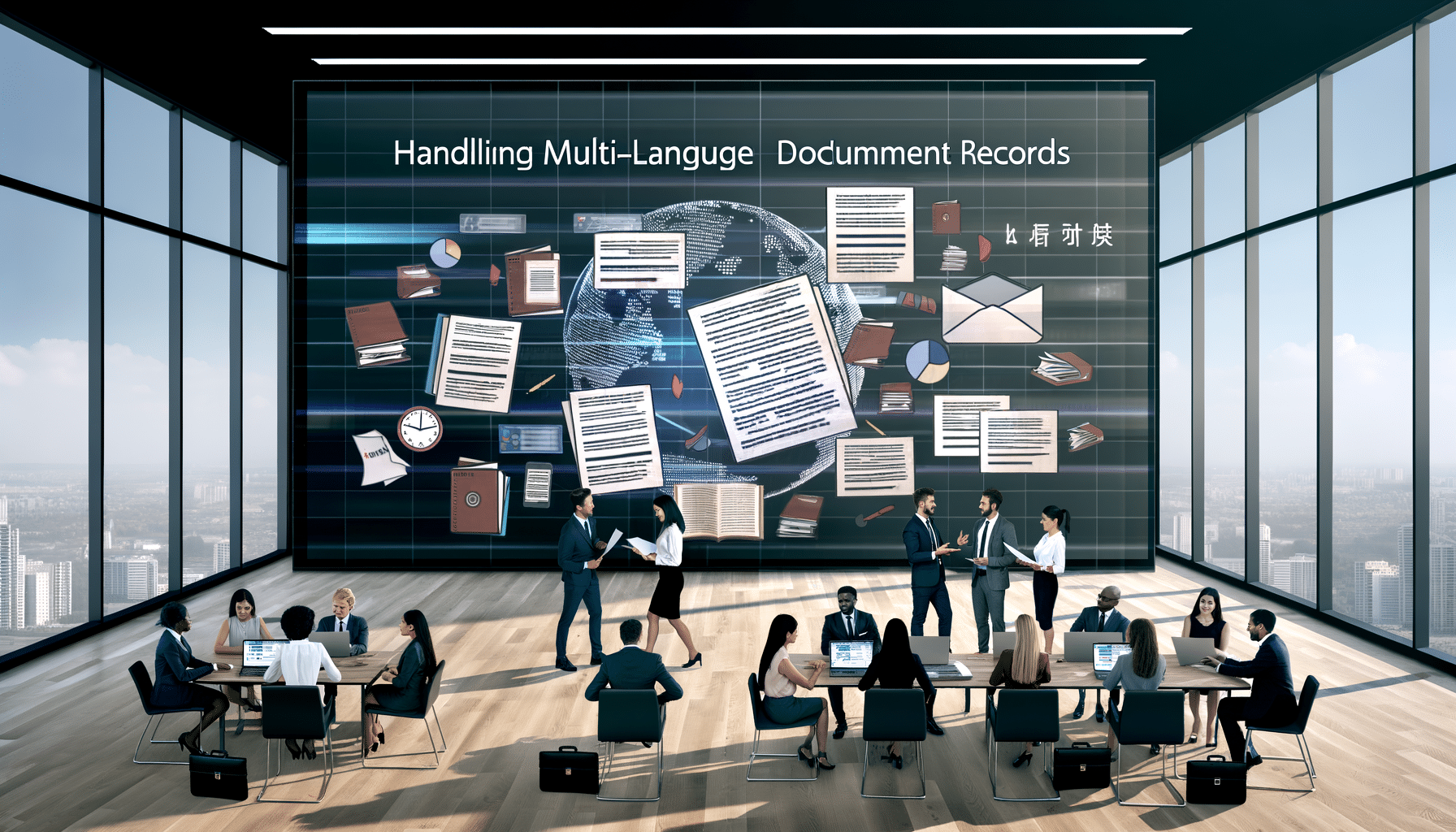Embracing the Complexity of Multilingual Records Management
From the moment I started RecordsKeeper.AI, the growing need for handling records across various languages was evident. As we continue to globalize, managing multilingual records has become an essential capability for businesses striving for international expansion and compliance. However, the transition to a comprehensive multilingual record management system can feel daunting, which is exactly why I want to walk with you through this transformative journey.
The Language of Business in a Globalized World
In today’s interconnected business landscape, companies aren’t confined to a single region or language. Many organisations operate across continents, necessitating seamless communication and documentation practices in multiple languages. The challenges here are manifold, from ensuring accurate record translation to maintaining regulatory compliance across diverse linguistic landscapes.
But, why does multilingual records management matter so much? To put it simply, effective management of records in multiple languages is not just about following regulations—it’s about unlocking international market potential and enriching collaboration. Failure to manage documents properly can lead to discrepancies, legal complications, and ultimately lost business opportunities.
Turning Challenges into Strategic Advantages
Integrating multilingual document records within your organization’s workflow might seem complex, but you’ll find that embracing this complexity brings valuable benefits. At RecordsKeeper.AI, we have channeled our efforts into making this process as seamless as possible by leveraging cutting-edge technologies like AI and Blockchain. Let me share how these innovations can ease the transition.
AI-Driven Categorization and Translation
One of my proudest accomplishments with RecordsKeeper.AI is its capability in automated categorization and multilingual translation. The AI-powered tools ensure that records are automatically classified and tagged by language, offering precision that traditional methods struggle to match. Moreover, these tools are flexible—adapting to the nuances and variations within language translation, ensuring consistency and reliability. Through natural language queries, finding the right document becomes a breeze.
Blockchain for Ensuring Data Integrity
Handling multilingual records inevitably calls for enhanced data integrity. Incorporating Blockchain technology, we deliver immutable records that serve as a trust anchor in a multilingual context. The auditing and compliance challenges are minimized when you have tamper-proof data, providing peace of mind to regulatory bodies globally.
Navigating the Compliance Landscape
Every country has its own set of compliance standards, adding layers of complexity when managing multilingual records. From GDPR in Europe to HIPAA in the United States, organizations must ensure that they cater to each standard meticulously.
Our compliance management feature automates this process, tracking regulations and structuring workflows to align with rules across different jurisdictions. The ability to traverse various regulatory environments with seamless data retrieval and reporting capabilities becomes a game-changer, allowing you to focus resources elsewhere.
Best Practices for Implementing Multilingual Records Management
As we develop our multilingual document management strategies, I’ve discovered several best practices that can serve as beneficial guidelines:
- Define Your Language Needs: Assess the records that require translation and establish which languages are essential for your operations.
- Invest in the Right Tools: Leverage AI and Blockchain technologies to automate translation and document categorization.
- Prioritize User Accessibility: Ensure that documents are easily retrievable by multilingual teams through intuitive searches and standardized formatting.
- Maintain Compliance Vigilantly: Keeping up with the changing regulatory landscape is crucial. Regular audits and updates are essential to stay compliant.
- Train Your Team: Equip your staff with the knowledge and skills needed to work effectively within a multilingual system.
The Future of Multilingual Records Management
The future holds infinite possibilities for those who leverage multilingual records management. By modernizing the way we handle global documentation, enterprises can streamline operations, foster inclusiveness, and drive international collaboration.
Innovation in AI and Blockchain only signals the beginning. I plan to continue pushing forward, exploring ways to enhance our platform’s capabilities to meet the ever-evolving demands of the global market.
Managing records in multiple languages effectively positions your organization at the forefront of global business and regulatory adherence. If you’d like to delve deeper into strategies, tactics, and tips for optimizing records management, I encourage you to reach out or follow my entrepreneurial insights. Let’s transform record management into a strategic advantage together.








